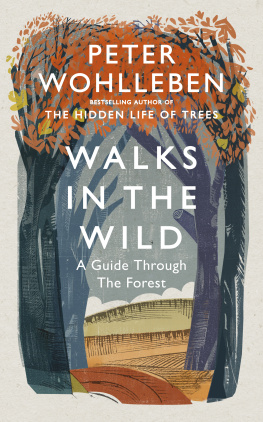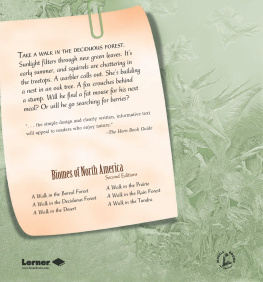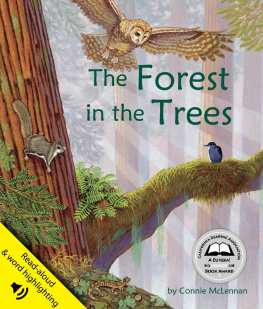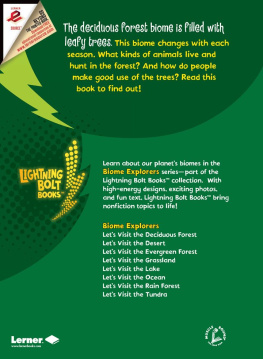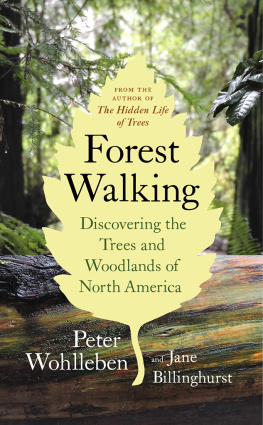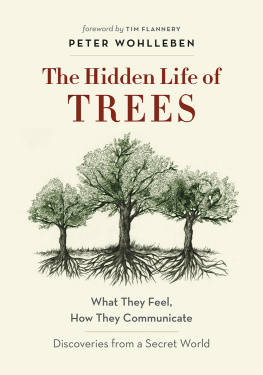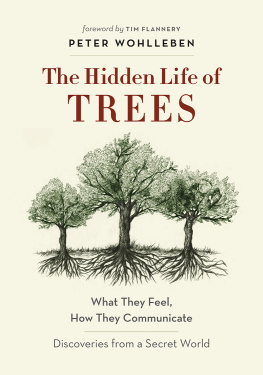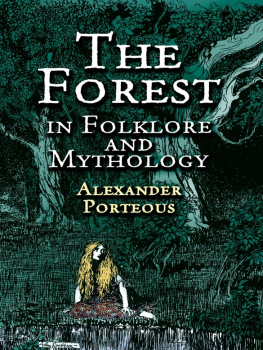

Peter Wohlleben
Walks in the Wild
A guide through the forest

About the Author
Peter Wohlleben spent over twenty years working for the forestry commission in Germany before leaving to put his ideas of ecology into practice. He now runs an environmentally friendly woodland in Germany, where he is working towards the return of primeval forests, as well as caring for both wild and domestic animals.
Wohlleben has been celebrated for his distinctive approach to writing about nature; he brings to life groundbreaking scientific research through his observations of nature and the animals he lives amongst. He is also the author of international bestsellers including The Hidden Life of Trees and The Inner Life of Animals.
By the same author
The Hidden Life of Trees
The Inner Life of Animals
The Weather Detective
The Secret Network of Nature
Introduction
When my publisher asked me if I would like to write an instruction manual for the forest, I leapt at the opportunity. I love forests and they have determined the course of most of my life. But I stumbled accidentally into working with woodlands. I intended to study biology, because like so many school leavers I didnt quite know what to do with my love of nature. My mother spotted a small advert in the paper: the local state forestry administration here in the Rhineland-Palatinate was seeking applicants for a study programme. I applied, was accepted and spent the next four years alternating between practical placements and lecture halls.
What I subsequently encountered in the field or rather, in the woods was not at all what I had imagined or hoped. The use of heavy machinery that destroyed the forest floor was just the tip of the iceberg. Poisonous insecticides, clear cutting, and felling the oldest trees (mature beeches, which I love so much) these were all part and parcel of an approach to forestry that left me feeling increasingly alienated. During my studies, I had been taught that all of this was key to maintaining healthy forests. As strange as it may seem to you and me, this is what thousands of students are led to believe by their lecturers. Initially uncomfortable about working in such a way, I gradually began to reject this approach. I was unsure how I could pursue a lasting career when battling against an approach that I disagreed with so deeply.
Then, in 1991, I came across the publicly owned ancient beech forest at Hmmel, in Germanys mountainous Eifel region, which the municipality wanted to manage in an ecological and sustainable manner. Part of the forest is over 4,000 years old, making it one of the few untouched areas of land that still exist in Germany. Working together, weve succeeded in combining set-aside reserves with carefully tended plots for felling, while simutaneously encouraging the involvement of the local population. I started to run events for the public, ranging from forest survival skills training and building log cabins, to guided tours amidst the wonderful world of trees.
I was often asked by people who came on these walks where they could go and read more about what I was telling them. All I could do was shrug, because at that point I knew little of the literature on the subject. My wife urged me to write something down if only for the benefit of our visitors, so I sat down to pen a short guide while on holiday in Lapland. I sent the manuscript to several publishers and said to my wife, If no one accepts it by the end of the year, then writing isnt for me.
As you can see, things turned out rather differently, and I have greatly enjoyed adding writing to the scope of my work. With my writing, I hope I can inspire many more people to develop a love of forests, because to my mind there are still far too few people exploring and making use of this natural asset. Not in the sense of the timber industry no, in many respects there is already far too much tree felling going on. What I want to see more of are the sort of adventures, great and small, that are waiting for you amidst the trees while they are alive. And all you have to do is step into the woods and go for a walk.

1
A Walk in the Wild
Im sure you can picture the scene. Youre out walking in the woods with children and sooner or later everything gets a bit lively. Perhaps theyve caught something, or spotted something dart through the undergrowth, and they shriek with excitement; or perhaps its just a noisy expression of sheer delight at being in the woods. The knee-jerk response of the adults in the group tends to be, Shhh! Not so loud!
But why? Do deer really mind when people make a noise? Yes, wild animals like it when its quiet, but not because theyre sensitive to noise. When a storm howls through the treetops or a heavy downpour descends, the noise means they can no longer distinguish any other sounds. They wouldnt be able to pick out the footsteps of an approaching wolf or a lynx. An ability to hear is therefore a matter of life and death for a deer. For this reason, they are more comfortable in calm, dry weather conditions, where every step on a crackling twig is audible.
Noisy people in the woods dont cause too much of a nuisance to the animals because their sounds dont immediately fill the whole forest; the noise comes just from one direction. They also know that if were being noisy, were not on the prowl. For we humans are their biggest enemy when we come in the form of the hunters. Even if wolves and lynx are gradually finding their way back into some European landscapes, they will always be hugely outnumbered by their human cohabitants. It is no wonder that our wild animals anxiety is mainly focussed on bipeds. When we walk along trails through the woods, joyfully singing or chatting away loudly, we send a reassuring signal to our fellow creatures that we are not out hunting. This is the case even with wildcats, which are extremely shy. Even they were hunted once because of their reputation as mean deer-stalkers. Wildcats catching deer? Really? The wildcat might be only a very distant relative of the domestic cat, but it isnt much greater in size. Can you imagine your tabby making a meal of a roe deer? Its small teeth are much too short, and its jaws cant open wide enough to get a grip on such a large animal. Nevertheless, for centuries the wildcats deer-stalking prowess was considered common knowledge among hunters, meaning the feline predator was mercilessly tracked down. Its no wonder that they are very shy.
But the sounds of people strolling through the forest are not perceived as a danger by other species. One snowy January, I led a group of visitors through the old beech wood that I manage here at Hmmel. The hikers wanted to see our woodland burial ground. After we had looked around for an hour, we were heading back to the car park, when I realised I had left my backpack under a tree. Our work experience student offered to go back and fetch it for me. When he caught up with us a quarter of an hour later, he was buzzing. He had seen a wildcat saunter nonchalantly across the path. The animal had clearly waited close by until it was confident that the chatty humans had left the old forest. I had a similar experience a year later, on a hot July day, at the same car park for the woodland burial ground. I was talking to a colleague, leaning against my 4x4, when I saw a wildcat some fifty yards away from us, crossing the track from one stretch of woodland to another, quite untroubled by our presence. It didnt seem bothered by the road nearby either, suggesting that it was more likely to shy away from the presence of people quietly stalking through the undergrowth. From that, Id conclude, theres no need to worry about making a racket in the woods, and least of all noisy children. Or rather, I wouldnt worry about disturbing the wild animals, though other adults might have something else to say about it!
Next page
